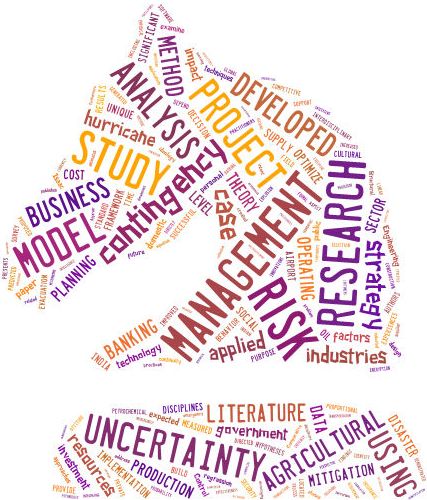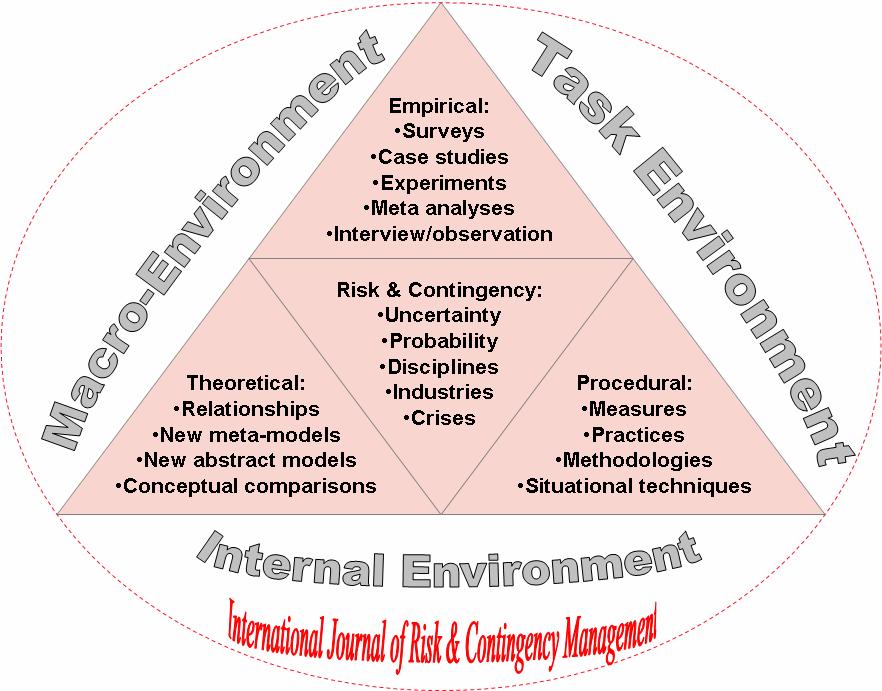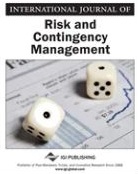 Early System Prepress: titles of
recently published and in-press manuscripts through gateway (with DOI):
IJRCM
Early System Prepress: titles of
recently published and in-press manuscripts through gateway (with DOI):
IJRCMCabell's listed journal [authors have you checked Cabell's or Beall's List of bad journals?]
Mandatory style paper; IJRCM articles in APA citation format, Zotero RIS import with abstracts and fulltext URL.
Multi-Year Call-For-Papers Deadlines (all manuscripts will be at double-blind peer reviewed - FREE: no fees to authors, open access is optional)
 January
1, 2023: Risk and or uncertainty-related topics in cyber-security,
block chain, cryptocurrency, fintech, climate change: Editor-in-Chief Dr. Rao Vajjhalla
January
1, 2023: Risk and or uncertainty-related topics in cyber-security,
block chain, cryptocurrency, fintech, climate change: Editor-in-Chief Dr. Rao Vajjhalla
May
8-11, 2023:
Tourism, economics, business, education and social science
academic conference: What's next after COVID-19 [online + Israel TEBEC]
July 1, 2022: Terrorism,
ransoms, identity/cyber
fraud, money
laundering, counterfeiting, human trafficking, contingency
planning: call-for-papers
September 1, 2022: Information technology and information systems risk management, technology acceptance/distrust, decision making: call-for-papers
Book series - projects, updates, call-for-papers or call-for-chapters and special guest invitations: edited book(s)
Paper Types (with manuscript size expectations; see submission guidelines below; mean acceptance rate = 12%; author cost to publish = free)1. Cases relying on probability concepts such as insurance, engineering, psychology, construction (5500-8000 words, 10+ pages, 20+ references);
2. Empirical studies, factor analysis, regression, surveys, meta-analysis related to uncertainty, risk or probability (5500-8000 words, 10+ pages, 20+ references);
3. Best-practices, contemporary measures for assessing or managing risk, complex decision making (2500-5500 words, 5+ pages single-spaced, 5+ references);
4. Scholarly summary of event, software, book, professional standards, letters, or critical monologues of risk topics (1000-2500 words, 2+ pages, 1+ references).
Abstract (Guiding Scholarly Research Questions)
 Perspectives
on risk
and contingency differ. One definition of risk is: the effect of
uncertainty on
goals (ISO, 2009, guideline 75). According to economist Frank Knight
(1885-1972), risks are known in the sense they can be measured, but it
is the
underlying uncertainty factor that remains illusive (Haimes, 2009;
Lerbinger,
1997). Probability theory and fuzzy logic can be used to estimate risk
(McNeil, Rudiger
&
Embrechts, 2005). At the other extreme, contingency is a buffer or
reserve against
expected risk (ISO, 2009; Raftery, 1994).
Perspectives
on risk
and contingency differ. One definition of risk is: the effect of
uncertainty on
goals (ISO, 2009, guideline 75). According to economist Frank Knight
(1885-1972), risks are known in the sense they can be measured, but it
is the
underlying uncertainty factor that remains illusive (Haimes, 2009;
Lerbinger,
1997). Probability theory and fuzzy logic can be used to estimate risk
(McNeil, Rudiger
&
Embrechts, 2005). At the other extreme, contingency is a buffer or
reserve against
expected risk (ISO, 2009; Raftery, 1994).
Global
instability is a major stimulus for risk and contingency
management research across the disciplines (Strang, Korstanje & Vajjhala, 2018). In the last few years,
citizens,
organizations and governments around the world have experienced
increased
uncertainty, namely: the 2008 global economic crisis, tsunamis,
flooding, earth
quakes and terrorism (Strang, 2013; USGS, 2011). Global economies are
interconnected; thus, a
single-country-crisis can now impact the world-wide macro-environment.
This
alone is a good reason for practitioners across the disciplines and
nations to
collaborate on risk management research. On the other hand, there is no
generic
risk management model because factors differ from one industry or
discipline to
another – therefore practitioner insight is needed. Empirical
studies reveal
that uncertainty and risk are managed differently from one disciplinary
field
to another (Sperandio & Girard, 2010; Strang, 2010; 2012a, 2012b;
Smith
& Fischbacher, 2009; Sodhi & Tang,
2009). In fact ISO points out their standards are principles and
frameworks for
risk management; they assert that “management of risk must be
tailored to the
specific needs and structure of the particular organization”
(ISO, 2009, para
34). In order to
better understand risk,
we need linear and nonlinear techniques (Strang, 2009; 2012a; 1012b),
qualitative
and quantitative methods (Strang, 2012c; Strang & Symonds,
2012),
cross-disciplinary comparisons (Strang, 2012a; 2012b; Strang &
Vajjhala, 2015), and multi-cultural perspectives
(Goodwin & Strang, 2012). We need to know if there are new
models or tools
emerging that can help with risk analysis and mitigation (Losha, Strang
& Vajjhalla, 2017; Strang, Lorstanje & Vajjhala, 2018).
This raises
the following research questions: (1) what do
practitioners in any discipline perceive about identifying
and evaluating risks (e.g., psychology, sociology, health care,
criminology, finance/economics,
business, marketing, education, computer science, information
technology, public
administration/government policy, insurance, physical sciences, natural
sciences/environment, etc.); and, (2)
how is uncertainty quantified and managed in these disciplines?
Goodwin, Y. & Strang, K. D. (2012). Socio-cultural and multi-disciplinary perceptions of risk. International Journal of Risk and Contingency Management, 1(1), 1-11. http://www.igi-global.com/journal-contents/international-journal-risk-contingency-management/53135
Haimes, Y. Y. (2009). On the Complex Definition of Risk: A Systems-Based Approach. Risk Analysis, 29(12), 1647-1654.
ISO. (2009). ISO 31000:2009 principles and generic guidelines on risk management. Geneva, Switzerland: ISO.
Lerbinger, O. (1997). The Crisis Manager: Facing Risk and Responsibility. NJ: Lawrence Erlbaum Associates.
Losha, F., Strang, K. D., & Vajjhala, R. (2017). Assessing the risk of leveraging technology in small businesses entering the European Union. International Journal of Risk and Contingency Management, 6(4), 99-122. Doi:110.4018/IJRCM.2017100104 IGI
McNeil, A. J., Rudiger, F. & Embrechts, P. (2005). Quantitative Risk Management. NJ: Princeton University Press.
Raftery, J. (1994). Risk Analysis in Project Management. London: E & FN Spon.
Smith, D. & Fischbacher, M. (2009). The changing nature of risk and risk management: The challenge of borders, uncertainty and resilience. Risk Management, 11(1), 1-12.
Sodhi, M. S. & Tang, C. S. (2009). Modeling supply-chain planning under demand uncertainty using stochastic programming: A survey motivated by asset-liability management. International Journal of Production Economics, 121(2), 728-738.
Sperandio, S. & Girard, P. (2010). Decision-making framework methodology: risk assessment in strategic management. International Journal of Management and Decision Making, 11(1), 4-18.
Strang, K. D. (2009). Using recursive regression to explore nonlinear relationships and interactions: A tutorial applied to a study. Practical Assessment, Research & Evaluation, 14(3), 1-13. http://pareonline.net/getvn.asp?v=14&n=3
Strang, K. D. (2010). Radiology manufacturing projects and politics: Scientist and politician normalized risk decision processes. International Journal of Management and Decision Making, 11(3/4), 231-248. Retrieved from https://link.springer.com/chapter/10.1057/9781137484956_1
Strang, K. D. (2012b). Man versus math: Behaviorist exploration of post-crisis non-banking asset management. Journal of Asset Management, 13(4), 1-20. Retrieved from http://www.palgrave-journals.com/jam/journal/vaop/ncurrent/full/jam201214a.html
Strang, K. D. (2012a). Applied financial nonlinear programming models for decision making. International Journal of Applied Decision Sciences, 5(4), 370-395. Retrieved from https://www.inderscience.com/info/inarticle.php?artid=50023
Strang, K. D. (2012c). Case study: Risk mitigation for hurricanes near Texas coast oil refineries. International Journal of Risk and Contingency Management, 1(2), 43-53. http://www.igi-global.com/article/case-study-risk-mitigation-hurricanes/67374
Strang, K. D. (2013). Homeowner behavioral intent to evacuate after flood warnings. International Journal of Risk and Contingency Management, 2(3), 1-19. http://www.igi-global.com/journal-contents/international-journal-risk-contingency-management/53135
Strang, K. D., & Symonds, R. J. (2012). Analyzing research activity duration and uncertainty in business doctorate degrees. International Journal of Risk and Contingency Management, 1(1), 29-48. Retrieved from http://www.igi-global.com/article/international-journal-risk-contingency-management/65730
Strang, K. D., & Vajjhala, N. R. (2015). Impact of Socialized Uncertainty on Group Decision Making: An Experiment with Emerging Executives. International Journal of Risk and Contingency Management, 4(2), 45-58. doi:10.4018/IJRCM.2015040104, IGI
Strang, K. D., Korstanje, M. E., & Vajjhala, N. R. (2018). Research, Practices, and Innovations in Global Risk and Contingency Management (418pp), ISBN: 978-1522547549, doi:10.4018/978-1-5225-4754-9, http://www.igi-global.com/book/research-practices-innovations-global-risk/185476). PA: IGI-Global
USGS. (2011). Earth quakes hazards program: American National Science Service. Retrieved from www.usgs.gov
- Applications of risk, contingency management and decision making across disciplines and industries (including but not limited to health care, manufacturing, natural resources, agriculture, government, schools/higher education, tourism, chemicals/minerals, military, transportation, technology, financial, insurance, investment, business services);
- Big data-driven risk and contingency management; big data analytics for risk and contingency management;
- Micro-level case studies of mathematical formulations of risk and/or contingencies;
- Insurance and health risk, information technology risk, security and terrorism risk;
- Human behavior, risk in psychology, sociology and the other social-sciences, risk in management science, risk competencies;
- Risks and contingency management in traditional economics and finance, risk transfer, underwriting;
- Novel/unique applications of risk frameworks and models, across disciplines and/or industries;
- Risk versus uncertainty, macro-level studies of risk-sensitive industries; certainty, determinism;
- Comparative studies of risk or contingency management across organizations;
- Comparative analysis of risks and/or contingency across disciplines and workplace functions;
- Special topics of risk and contingency management, global economic recession critical analysis;
- Significant global events/impacts (global warming, flooding, tsunamis, earth quakes, terrorism, etc.);
- Crisis and incident management (analysis, solutions, compliance), contingency planning, risk mitigation;
- Applications of risk or contingency management across the major disciplines, industries and/or sectors;
- Crises and risk management education, training methods, learning techniques, dissertation meta-analyses.
Use APA 6th style, except: single space, include figures/tables within text, add author bio(s) at end, use the 'manuscript template' below;
IJRCM manuscript style template: https://igiprodst.blob.core.windows.net/public-publish/journal-organization-and-formatting.docx
Helpful APA writing style and formatting guides (with examples): http://www.docstyles.com/library/apalite.pdf
Prospective authors should note that only original and previously unpublished articles will be considered (previous studies must be revised at least 20-40%).
All article submissions will be forwarded to at least 3 members of the Editorial Review Board of the journal for double-blind, peer review.
Final decisions regarding acceptance/revision/rejection will be based on the reviews received from the reviewers.
All submissions must be made in our eDiscovery system (select IJRCM): http://www.igi-global.com/submission/manuscripts/?jid=53135
IJRCM Governance
 The
mission of IJRCM
is to discover what risk
and uncertainty mean to practitioners or decision makers across
disciplines,
industries and cultures.
The
mission of IJRCM
is to discover what risk
and uncertainty mean to practitioners or decision makers across
disciplines,
industries and cultures.IJRCM Editorial Policies: http://igi-global.com/ijrcm (scroll or select 'policies').
IJRCM testimonials and indexes: http://www.igi-global.com/journal/international-journal-risk-contingency-management/53135#reviews-and-testimonials
 Dr. Narasimha Rao Vajjhala, PhD, MSCS, MBA, PMP®
Dr. Narasimha Rao Vajjhala, PhD, MSCS, MBA, PMP®
IJRCM Editor-in-Chief
Bio and example research: https://www.narasimharao.net/
Editor-in-Chief
email: Editor.IJRCM@igi-global.com
 Dr Kenneth
David Strang, Doctorate,
MBA, BS, AS,
FLMI, CNA, PMP®
Dr Kenneth
David Strang, Doctorate,
MBA, BS, AS,
FLMI, CNA, PMP®
IJRCM Editor-in-Chief Emeritus at IGI-Global,
Professor Emeritus
Bio and scholarly research:
http://kennethstrang.com